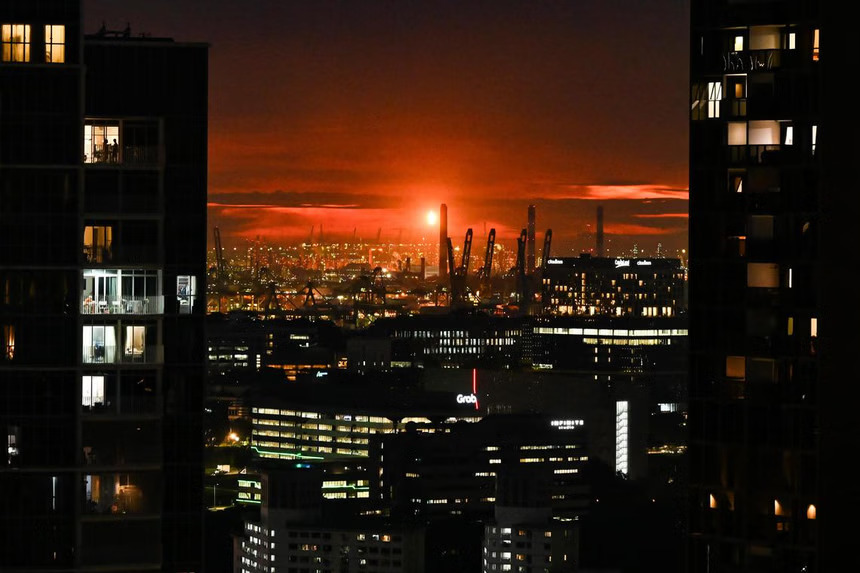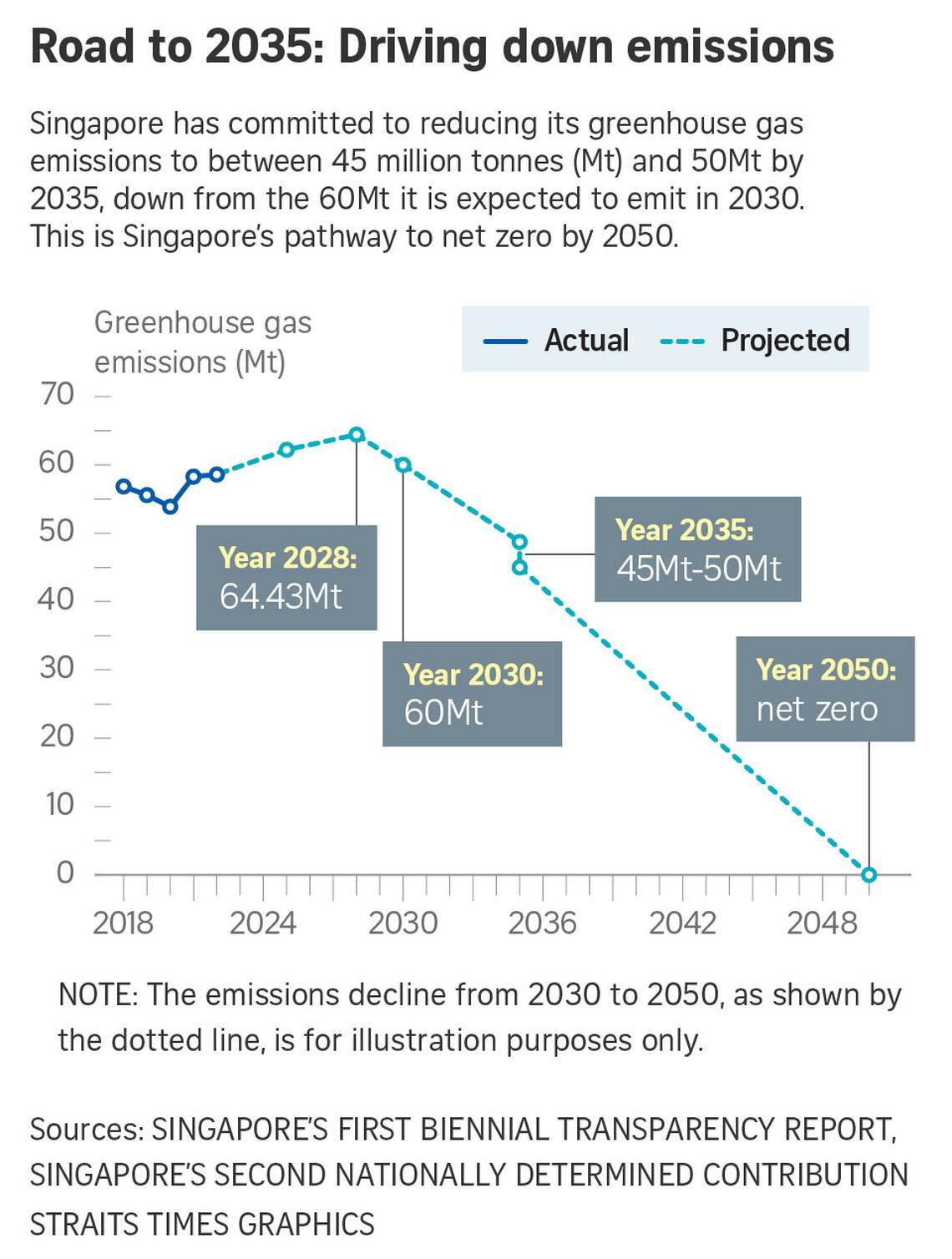Singapore’s 2035 climate targets feasible, but govt support and geopolitical stability key: Experts

(Photo credit: ST Photo)
Source: The Straits Times
Energy experts and companies said Singapore’s 2035 climate targets are feasible to achieve, but substantially slashing planet-warming emissions will not be easy given the geopolitical uncertainties.
The success of the island-state’s climate goals hinges on government support, more emission-reducing technologies being trialled and collaboration with other countries, especially with neighbours.
The public may also have to brace themselves for higher electricity and energy costs with the need to scale up climate mitigation measures, experts added.
On Feb 10, Singapore announced its 2035 climate targets.
The Republic aims to reduce its emissions to between 45 million tonnes (Mt) and 50Mt by 2035, down from the 60Mt it expects to emit in 2030. This target allows Singapore’s emissions to decline on a linear trajectory, dropping steadily over time instead of registering a sharper downturn closer to mid-century.
Singapore’s total greenhouse gas emissions in 2022 amounted to 58.59Mt. The Republic expects its emissions to reach a peak of 64.43Mt in 2028, before coming down to 60Mt in 2030.
While measures such as improving energy efficiency and greening buildings are low-hanging fruit, major emission-cutting measures such as green electricity imports and carbon capture need international collaboration.
In addition, said Dr Zhong Sheng, a research fellow at the NUS Energy Studies Institute (ESI), political willingness, stable regulatory frameworks and geopolitical stability are key for electricity imports to proceed without disruption.
“Geopolitical factors, such as trade disputes or tensions between countries, may disrupt the flow of energy across borders and affect the reliability of import agreements,” he added.
Singapore has inked deals with Indonesia, Cambodia and Vietnam to import 5.6 gigawatts of low-carbon electricity by 2035, and much of the green electricity is expected to come from solar, hydropower and wind.
The imports are expected to meet around a third of the Republic’s energy needs by 2035.
According to calculations by Mr Ho Hiang Kwee, an adjunct senior research fellow at ESI, importing an additional four gigawatts of green electricity between 2030 and 2035 could reduce emissions by about 10 million tonnes.
But this decade of decarbonisation could push up electricity costs, which could meet resistance from consumers, said the experts.
With more frequent discussions about the cost of living, getting the public to accept paying for the green transition and supporting expensive alternative technologies may be tough, said Dr David Broadstock, energy transition research lead at the NUS Sustainable and Green Finance Institute.
Importing renewable energy comes with a price, which can span costs incurred from the laying of subsea cables to the upgrading of Singapore’s power grid.
In an interview in late 2024, the Energy Market Authority’s chief executive Puah Kok Keong was asked if grid upgrades will increase electricity bills.
Mr Puah said then that he was unable to definitively say yes, but noted that the absolute costs related to the grid will increase.
The Singapore Youth for Climate Action group said projects that supply renewable energy imports should avoid causing environmental or social issues at project sites abroad.
“We hope Singapore’s environmental efforts don’t inadvertently create ‘sacrificial zones’ elsewhere,” it said.

For emitting companies and industries, there is no silver bullet for reducing emissions today, noted Dr Broadstock.
“This is a humbling reality, though not a cause for alarm. Key technologies like hydrogen or carbon capture and storage are not market-ready, at least not as a mainstream solution,” he said.
Mr Amandeep Bedi, managing director and head of South-east Asia at Engie Impact – the sustainability division of utility giant Engie – pointed out that the adoption of these emerging and nascent technologies is currently slow, contributing to higher costs.
To lower the risks for industries, he suggested companies and policymakers come together – with the help of grants – to drive pilot projects to help scale up emission-cutting technologies.
“In some cases, the public sector can provide anchor demand to create greater support on the financial and technical viability of high-risk projects,” he said.
Dr Broadstock cited the hypothetical example of using more green hydrogen, which is emissions-free and produced from renewables, in Singapore’s power generation mix. While a power plant’s emissions will fall as a result of this, it may have to pay more for the hydrogen.
Governments can potentially intervene in this type of scenario and use alternative mechanisms and tools to limit the price hike, Dr Broadstock said.
This is where schemes like the Government’s Future Energy Fund comes in. With an initial injection of $5 billion, the fund provides financial support to catalyse investment in low-carbon infrastructure that could have high upfront capital costs, for example.
Commenting on Singapore’s 2035 climate target, Dr Roger Fouquet, principal research fellow at ESI said: “The goals are not dramatic reductions and can be met if there is a willingness to act and to pay a premium.”
